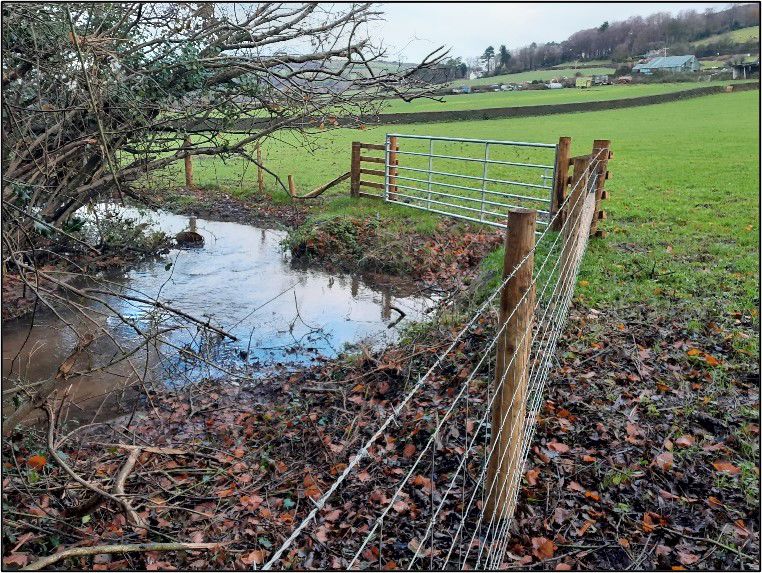Protecting river water quality in Denbighshire

A river catchment in Denbighshire has been given a boost thanks to work completed to help restrict livestock and improve water quality downstream.
Natural Resources Wales (NRW) officers have worked closely with local landowners on a range of works to restrict livestock from accessing the Afon Bach river in the Clwyd catchment. This will improve water quality by reducing nutrients, sediment and animal waste from reaching the watercourse.
The eight schemes in 2023/24 included installing over 5,000 metres of fencing to restrict livestock from entering the water. There have also been 27 new water troughs and watering systems installed as alternative water sources.
The schemes also included planting 115 metres of hedgerows to help exclude stock from accessing the watercourse. This will also increase biodiversity and offer shade and shelter for livestock.
The works also included unblocking four blocked culverts, installing 6 metres of new woody bankside and restoring two ponds.
The work has been funded by the Welsh Government’s Water Capital Programme.
This financial year NRW has committed to spend £15m through the Water Capital Programme, which supports a number of environmental priorities including river restoration, metal mine remediation, fisheries and water quality.
Bev Dyer, NRW Senior Officer People and Places, said:
“This work is a timely boost for the Afon Bach and the wider catchment. The Clwyd catchment suffers from phosphate and nutrient issues and fish populations continue to deteriorate.
“Allowing livestock unrestricted access to rivers can affect the overall health of the water environment and their ability to support healthy communities of plants, animals and people.
“There is now over 13,000m2 of newly protected riparian zone – land on the banks of a river – that will help improve water quality downstream at Rhyl’s designated bathing water beaches.”
“Working with other organisations through the Clwyd Forum allows us to prioritise and coordinate targeted areas for delivering environmental outcomes. This, alongside working with the local farmers, is allowing us to improve the environment together.”
